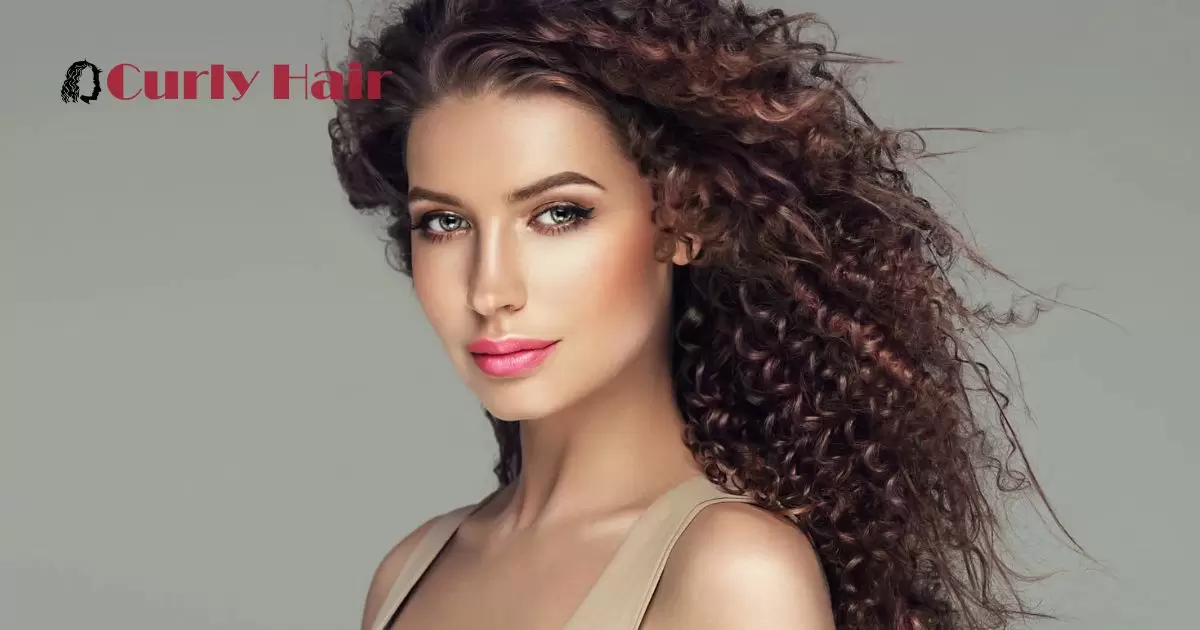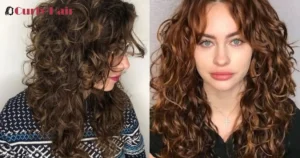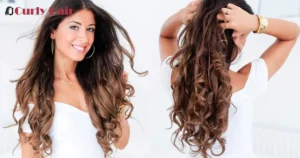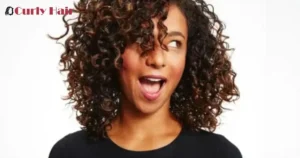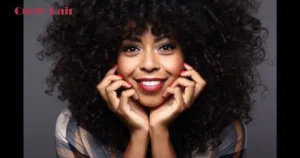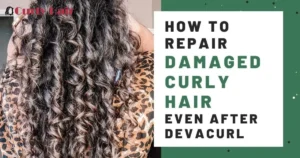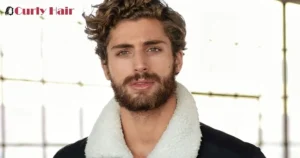Curly hair is caused by the shape of the hair follicle which produces a twisted strand. Oval or flattened follicles lead to the curl pattern versus round follicles that produce straight hair. The amino acids in the hair protein keratin also impact curl formation.
The structure of your hair follicles and keratin proteins determine texture. If you’ve asked why is my hair curly, this article will explain the biology behind those bouncy locks. Get the basics on how genetics, from ethnic background to heredity, play the biggest role in curl pattern.
Get an overview of the genetics, ethnicity, and biological factors that determine curl patterns. Learn how environmental influences can alter the appearance of curls. Read on to discover the fascinating biology explaining why some hair is straight and some is curly.
Key Takeaways
- Curliness is rooted in the shape of your hair’s cortex.
- Your natural curls are a powerful form of self-expression.
- Understanding the biology behind curls helps appreciate and celebrate your unique beauty.
Genetic Factors
Your curly locks might just be a family affair. Genetic factors play a crucial role in determining hair texture. If your parents or grandparents boast bouncy curls, chances are your DNA is responsible for those twists and turns. The shape of your hair follicles, influenced by genes, decides whether your hair grows straight, wavy, or in captivating curls.
So, when pondering the mysteries of your curly mane, it’s worth giving credit to the hereditary magic embedded in your genes. Inheriting a specific hair type isn’t a mere coincidence, it’s the genetic blueprint that charts your hair’s course. The genes governing your hair’s structure are like a well-executed plan, passed down through generations.
Genetic Variation
| Key Points | Details |
| Role of Genetic Variation | Determines hair texture and curl patterns. |
| Inheritance Patterns | Curls are influenced by a combination of genes from both parents. |
| Ethnic and Racial Factors | Different populations exhibit distinct curl patterns due to genetic diversity. |
| Genetic Mutations | Specific mutations can impact hair texture, leading to variations in curliness. |
Curly hair often finds its roots in our genes. Genetic variation, Cantu Curling Cream on wavy hair plays a crucial role in determining the texture of our hair. Simply put, the genes inherited from our parents influence the shape of our hair follicles, and this, in turn, affects whether our hair is straight, wavy, or curly.
If your parents or grandparents have curly hair follicles, there’s a good chance that you inherited those genes, making your hair naturally curly. It’s a simple but fascinating genetic twist that shapes the way our hair looks and behaves.
Family Traits
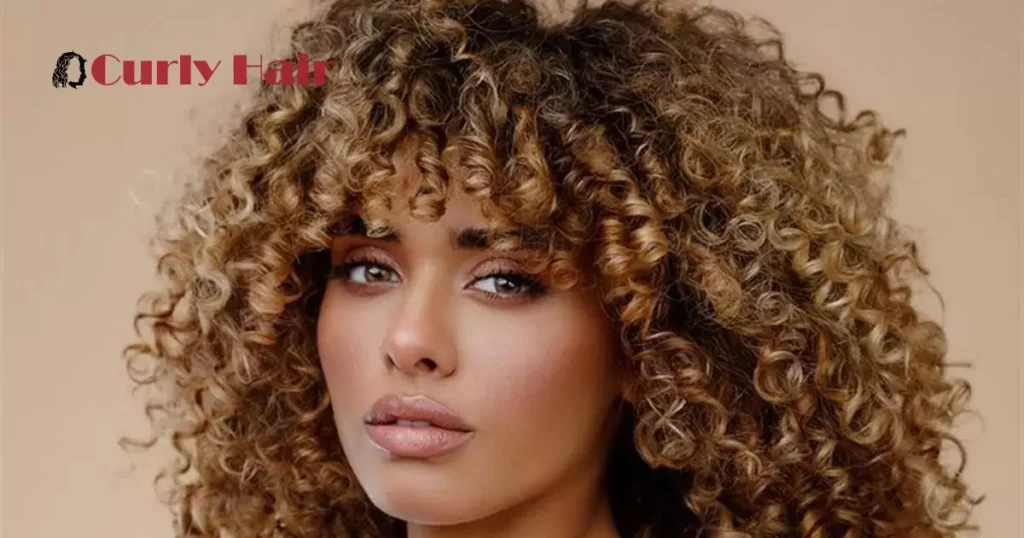
Our curly locks often trace back to family traits. It’s a genetic dance, where genes inherited from parents play the lead. If your folks boast a head of curls, chances are high you’ve got the same genetic twist. It’s like a hair legacy passed down through generations. Thanks, Mom and Dad!
The root of the curl mystery lies in your hair follicles. Straight hair follicles create, you guessed it, straight hair. But when follicles are more curved, it’s a curl invitation. Picture a slalom course for hair growth, the curvier the path, the curlier the outcome. These follicles dictate the direction your hair takes, sculpting those fabulous curls.
Genetic Testing
Genetic Testing plays a key role in unlocking the mystery behind why your hair is curly. This straightforward process involves analyzing your DNA to uncover the genetic factors contributing to your hair texture. By pinpointing specific genes associated with curliness, genetic testing provides valuable insights into the natural characteristics of your locks.
The information gleaned from genetic testing can unveil the genetic variations that influence the shape of your hair follicles and the proteins responsible for its curl pattern.
Genetic testing demystifies curly hair and provides a personalized understanding of your unique genetic makeup, contributing to a broader comprehension of the factors determining your hair texture.
Hair Structure
Your hair’s curliness is deeply rooted in its structure. Hair is made up of a protein called keratin, forming a shaft with three layers. The innermost layer, the medulla, might be absent in curly hair. The cortex surrounds it, determining your hair’s strength and color. The outer layer, the cuticle, resembles shingles, affecting how light reflects and contributing to the curl pattern.
Keratin Formation
Within your hair’s structure, keratin formation is the key player. Your hair cells produce this sturdy protein, creating a robust foundation for each strand. As these proteins link up, they shape the structure of your hair, influencing its texture and whether it’s straight, wavy, or delightfully curly. Understanding this keratin dance is a peek into the science of your unique curls.
Cuticle Layer
The cuticle, like a protective shield, plays a key role in your hair’s texture. Comprising overlapping scales, it safeguards the inner layers. When the cuticle lies flat, your hair appears smoother and less frizzy. For curly hair, the cuticle’s lifted scales contribute to a more textured and voluminous look. Understanding this outer layer sheds light on the intricacies of your hair’s natural curliness.
Cortex Structure
The cortex is the powerhouse of your hair’s strength and hue. Its unique structure, packed with spindle-shaped cells, influences your hair’s curliness. When these cells are more oval, you might have straight hair, but if they’re more elliptical, curls become your signature style. So, the secret lies deep within the cortex’s shape, determining the twists and turns of your locks.
Environmental Influences

Your hair’s curliness is also influenced by the environment you’re in. Humidity, for instance, can make your curls more pronounced, thanks to water’s effect on the protein structure of your hair.
On the flip side, dry conditions might lead to frizz, altering your hair’s natural pattern. So, the world around you plays a role in shaping those curls on your head. Pay attention to your surroundings, and you might just unlock the secret to your hair’s twists and turns.
Hair Care Practices
Taking care of your curls involves mindful practices. Regular, gentle washing with sulfate-free shampoos maintains your hair’s natural oils, preventing dryness. Embrace a wide-tooth comb to detangle without disrupting your curl pattern, and opt for silk or satin pillowcases to reduce friction and frizz while you sleep.
Hydration is key, moisturize your curls with leave-in conditioners or natural oils, enhancing their bounce and vitality. Avoid excessive heat styling; let your curls air-dry to preserve their natural shape. Regular trims prevent split ends and promote healthier, bouncier curls. Your daily hair routine plays a crucial role in maintaining those fabulous curls, so treat them with care and watch them flourish.
Hydration Levels
Maintaining optimal hydration levels is crucial for your hair’s texture. When your hair is well-hydrated, it tends to be smoother and less prone to frizz, creating a more defined curl pattern.
On the flip side, lack of moisture can lead to dryness, making your curls lose their bounce and becoming more prone to breakage. So, remember, keeping your locks hydrated is the key to embracing those beautiful, naturally curly strands.
Protective Styles
When dealing with curly hair, protective styles can be a game-changer. Braids, twists, or buns shield your curls from environmental stress, reducing damage and breakage. These styles not only safeguard your hair but also enhance its natural texture, promoting healthier, bouncier curls.
By opting for protective styles, you’re not just embracing a trendy look; you’re giving your hair the care it craves. These styles minimize manipulation, preventing tangles and promoting moisture retention, key factors in maintaining those gorgeous curls. So, next time you’re considering a new ‘do, think about the protective power it brings to your curly locks.
Trimming Routine
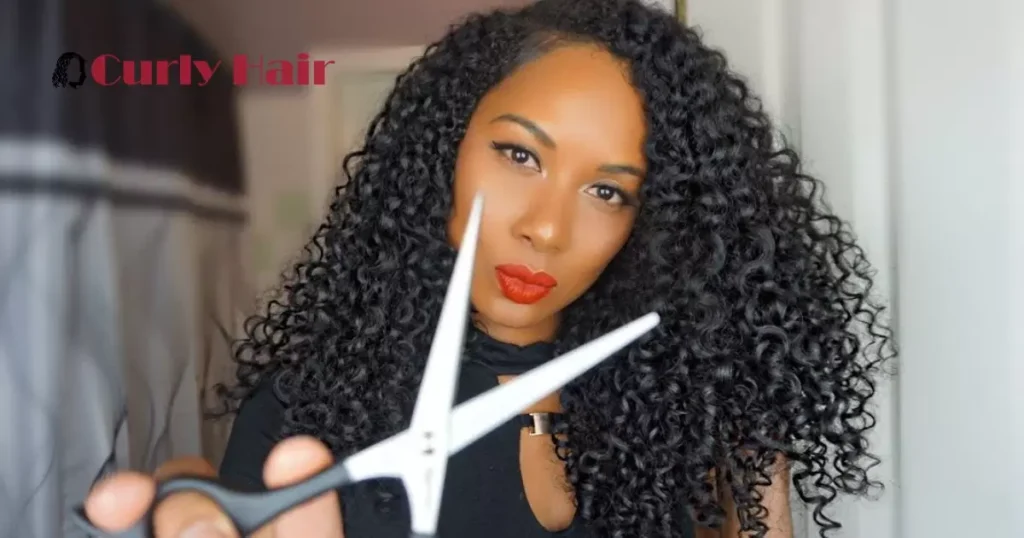
Regular trimming is the unsung hero of curly hair care. It helps control split ends, ensuring your curls stay bouncy and healthy. Aim for a trim every 8-12 weeks to maintain your curly locks’ vitality and shape, preventing those dreaded frizzies.
Think of trimming as a sculptor refining a masterpiece. It’s not about losing length but enhancing the natural flow and definition of your curls. Embrace this routine, and watch your curls spring to life with renewed vibrancy and shape.
Cultural Significance
- Curly hair has been celebrated across various cultures, symbolizing diverse meanings.
- In some cultures, curls are associated with vitality and energy, seen as a reflection of a spirited personality.
- Conversely, in other societies, curls are considered refined and sophisticated, often tied to notions of elegance.
- The cultural significance of curly hair extends to historical and modern beauty standards, showcasing its unique place in the tapestry of global perceptions.
- Understanding the cultural context reveals the rich and varied significance attached to the twists and turns of curly locks.
Cultural Traditions
Across the globe, cultural traditions play a role in celebrating and styling curly hair. In many African cultures, intricate braiding and styling techniques showcase the beauty of natural curls, passing down generations.
Similarly, in some South Asian cultures, henna and other natural ingredients are used to enhance and appreciate the unique texture of curly hair. Embracing these traditions connects people to their roots, fostering a sense of identity and pride in their natural curls.
Beauty Standards
Beauty standards play a role in how we perceive and embrace curly hair. Historically, straight hair was often idealized, contributing to misconceptions about curly textures. Modern perceptions are shifting, celebrating the natural diversity of curls, and challenging conventional beauty norms.
Embracing your unique curl pattern is a powerful statement against narrow standards, promoting authenticity and self-love.
Self-Expression

Embracing your natural curly hair is a powerful form of self-expression. Your hair texture is a canvas, allowing you to communicate individuality without words. Whether it’s tight coils, loose waves, or anything in between, your curls tell a unique story about who you are.
Curls have a language of their own, reflecting personal style and confidence. Choosing to let your hair curl naturally is a bold statement, a celebration of authenticity that speaks volumes about embracing your true self. It’s not just about hair; it’s about proudly expressing the beautiful, natural you.
Frequently Asked Question
Can hair change from straight to curly?
No, hair structure remains consistent, so hair doesn’t naturally change from straight to curly.
Can stress make curly hair straight?
Stress doesn’t permanently change hair texture, so it can’t make curly hair permanently straight.
What makes hair curly biology?
The curliness of hair is influenced by the shape of the hair follicle and the structure of the hair shaft’s cortex.
Conclusion
In conclusion, understanding why is my hair curly unveils the fascinating biology behind it. From the intricate structure of the hair, with its cortex determining curl patterns, to the self-expression embedded in every strand, your curls are a unique part of you. Embrace the beauty of your natural texture; it’s more than just hair, it’s a statement of authenticity.
Your hair’s inherent curliness isn’t merely a genetic gift, it’s a form of self-expression. The way your curls twist and turn communicates an unspoken story about your individuality. it’s not just a biological phenomenon, it’s a beautiful narrative of you.
